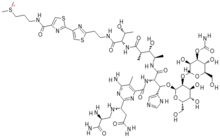PURPOSE: To compare the effect and mechanism of inhaled with systemic dexamethasone on the bleomycin-induced lung fibrosis in rats.
METHODS: 60 Sprague-Dawley rats were divided randomly into three groups including bleomycin-induced lung fibrosis group (Group A,n=20), inhaled dexamethasone group (Group B, n=20) and dexamethasone group (Group B, n=20). Each group was again divided into four subgroups, which were sacrificed on 1, 7, 14 or 28 day. Bronchoalveolar lavage fluid (BALF)was got and the cells counting aswell as differentiation were figured out, HE stain was performed on the lung tissue sections to observe the extent of alveolitis and fibrosis, the semi-quantity of apoptosis cells in lung tissue was assay by in situ TUNEL(terminal deoxynucleotidy transferase-mediated UTP nick endlabeling).
RESULTS: (1)Compared group B and C with group. A got lower percentage of neutrophils (P<0.05). (2)More severe fibrotic lesion was shown in the histological examination of the lung tissue sections of group A Compared with group B and C. (3)the apoptosis index (AI) of inflammatory cells in each subgroups of group B and C was higher than in group A, and there were no significance compared group B with C.
CONCLUSION: Inhaled dexamethasone can induce apoptosis of pulmonary inflammatory cells and ameliorate the formation of bleomycin-induced pulmonary fibrosis as well as systemic dexamethasone.
CLINICAL IMPLICATIONS: Inhaled steroid drugs maybe improve interstial lung disease.
DISCLOSURE: Li Xia, None.
Li Xia MD * Shanghai pulmonary hospital, Shanghai, Peoples Rep of China
COPYRIGHT 2005 American College of Chest Physicians
COPYRIGHT 2005 Gale Group



